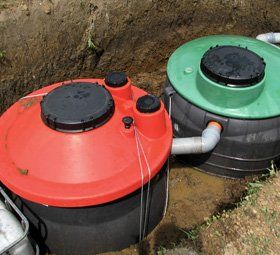
Educating You on How to Best Determine Septic Tank Care
Essential Dos and Don'ts of Maintaining Your Septic Tank
DO:
- Conserve water to reduce the amount of wastewater that must be treated and disposed of by your system. Doing laundry over several days will put less stress on your system.
- Repair any leaking faucets or toilets. To detect toilet leaks, add several drops of food dye to the toilet tank and see if dye ends up in the bowl.
- Divert down spouts and other surface water away from your tank and drainfield. Excessive water keeps the soil from adequately cleansing the wastewater.
- Have your septic tank inspected and pumped regularly by a licensed septic tank contractor. Suggested frequency is 3-5 years.
- Pumping your septic tank is probably the single most important thing you can do to protect your system. If the buildup of solids in the tank becomes too high and solids move to the drainfield, this could clog and strain the system to the point where a new drainfield will be needed.
- Keep your septic tank cover accessible for inspections and pumpings. Install risers with lids if necessary.
- Call your county health department or a registered septic tank contractor whenever you experience problems with your system, or if there are any signs of system failure.
- Keep a detailed record of repairs, pumpings, inspections, and other maintenance activities. Pass these on to the next homeowner.
DON'T:
- Don’t drive over your tank and drainfield or compact the soil in any way.
- Don’t dig around the tank or drainfield, or build anything over it, and don’t cover it with a hard surface such as concrete or asphalt.
- Don’t plant anything over or near the drainfield except grass. Roots from nearby trees and shrubs may clog and damage the drain lines.
- Don’t use a garbage disposal, or at least limit its usage. Disposals increase solids loadings to your tank by 50%, so you have to pump your tank more often than normally suggested.
- Don’t use your toilet as a trash can or poison your system and the groundwater by pouring harmful chemicals can kill the bacteria that help purify your wastewater.
- Examples: coffee grounds, disposable diapers, sanitary napkins, cigarette butts, fats, grease or oil, paints, thinners, photographic solutions, antibiotics, dental floss, kitty litter, tampons, condoms, paper towels, varnishes, waste oils and pesticides.
- Don’t put in a separate pipe to carry wash waters to a side ditch or the woods. This graywater contains germs that can spread disease. Use a laundry system.
- Don’t allow backwash from home water softeners to enter the septic system.
- Never enter a septic tank – toxic gases from the tank can kill. If your system develops problems, get advice from your county health department or a licensed septic tank contractor.
Request a FREE estimate
